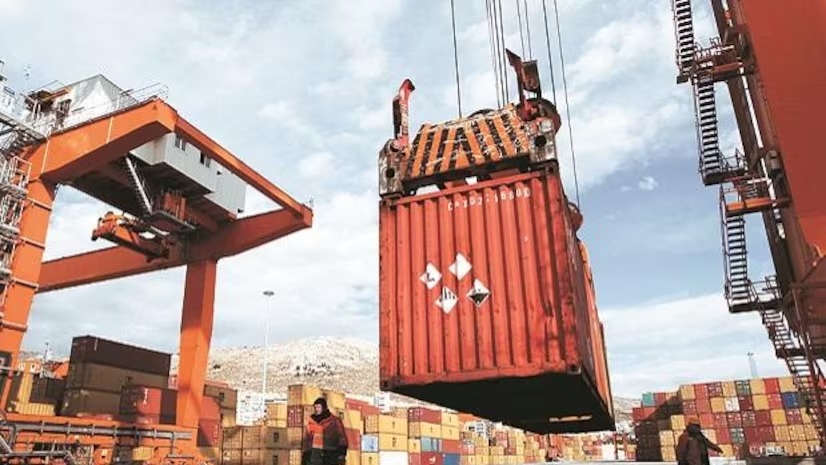India–US Trade Tensions Rise Over Steel and Auto Tariffs NMDC Limited reports a 38% drop in Q4 FY24 consolidated net profit RINL to Raise $23 Million Through Land Sales Amid Crisis

In a dynamic economic landscape, the Indian government, led by Commerce Secretary Sunil Barthwal, is actively pursuing reforms within the realm of Special Economic Zones (SEZs). The objective is to ensure the seamless movement of goods between the domestic tariff area (DTA) and SEZ spaces without compromising the competitiveness of goods in export markets. This initiative responds to challenges posed during the pandemic, where widespread 'work from home' practices led to the vacating of office spaces in SEZ areas, prompting the demarcation of SEZs into SEZ and DTA spaces.
Barthwal, addressing a symposium organised by the Bharat Chamber of Commerce, emphasised the evolving importance of scale economies in the current economic milieu. The planned reforms aim to safeguard the competitiveness of goods produced within SEZs, particularly concerning their movement between SEZ and DTA spaces. The demarcation of SEZs into distinct areas during the pandemic necessitates adaptations to restore the efficiency of these zones.
A critical aspect of the government's approach lies in aligning SEZ policies with the global value chain, as emphasised in the Foreign Trade Policy (FTP). The FTP, designed to enable exporters to leverage the global value chain, signifies a shift from the industry's historical pursuit of protectionism towards integration with global markets. The emphasis is on understanding competitive advantages and fostering a conducive environment for businesses to thrive.
Commerce Secretary Barthwal outlined the ambitious target of achieving USD two trillion in exports by 2030, anticipating USD one trillion from merchandise exports and an additional USD one trillion from services. Despite services appearing intangible, Barthwal sees substantial growth potential, urging a careful examination of impediments hindering the services sector's expansion. The intertwining of industrial and foreign trade policies underlines the growing significance of external trade as a catalyst for economic growth.
Countries worldwide are expressing interest in entering free trade agreements (FTAs) with India. Barthwal stressed the importance of a balanced approach in these agreements, acknowledging the principle of 'give and take.' Notably, the UK and the US are raising standards by incorporating sanitary and phytosanitary issues in imported goods, posing challenges that India must address.
In tandem with these discussions, an amendment bill has been proposed to revitalise SEZs and facilitate smoother business transactions between SEZs and DTA. The bill advocates sales from SEZ to DTA on a duty-foregone basis, partial de-notification of zones, simplified notification norms, and streamlined approval processes for SEZ units. Commerce and Industry Minister Piyush Goyal's commitment to easing restrictions further underscores the government's dedication to promoting SEZ growth.
A report from the Global Trade Research Initiative (GTRI) recommends allowing the sale of SEZ-manufactured products in the domestic market on payment of duty foregone on inputs. This strategic move aims to promote value addition within SEZs, fostering technological advancement and skill development. Presently, units in SEZs are allowed to sell products in DTA on payment of duties based on the output (finished goods). Extending similar concessions to SEZs, as suggested by GTRI, could incentivise units to increase value addition.
Despite the initial vision to strengthen the manufacturing industry, operational SEZs are predominantly concentrated in the IT/ITeS, electronic hardware, semiconductor, and telecom equipment sectors. This concentration has resulted in an unexpected surge in service exports, deviating from the initial plan.
Various factors contribute to the low efficiency of Indian SEZs. Relaxed regulatory restrictions in ASEAN nations have enticed companies to relocate units, and the presence of numerous free-trade agreements and preferential trade pacts diminishes the appeal of SEZs. Sector-specific constraints and underutilised land further compound the challenges. Approximately 20,000 hectares of SEZ land and ten crore square feet of built-up area are vacant, with only 267 of the 427 approved SEZs operational.
In response to challenges posed by the US at the World Trade Organization (WTO), the Commerce Ministry established a committee led by Bharat Forge chairman Baba Kalyani. This committee aims to make India's SEZ policy compliant with WTO standards, with the Development (Enterprise and Service) Hubs Bill based on its recommendations.
The committee's objectives include evaluating the SEZ policy for WTO compatibility, suggesting measures for maximising land utilisation, and exploring the integration of SEZ policy with other government schemes. With India targeting a USD 5 trillion economy by 2025, a paradigm shift in manufacturing competitiveness and services is imperative. This necessitates comprehensive policy evaluation and compliance with WTO regulations.
In conclusion, the evolving landscape of SEZ reforms reflects a dynamic approach by the Indian government. The proposed measures, if implemented effectively, hold the potential to rejuvenate SEZs, bolster economic activities, and position India as a key player in the global trade arena. The nuanced challenges and comprehensive solutions underscore the complexity of this endeavour, emphasising the importance of adaptive policies for sustained economic growth.
Also Read : Navigating economic crossroads: insights into India's interim budget Republic Day 2024 parade: Celebrating Milestones and Diversity